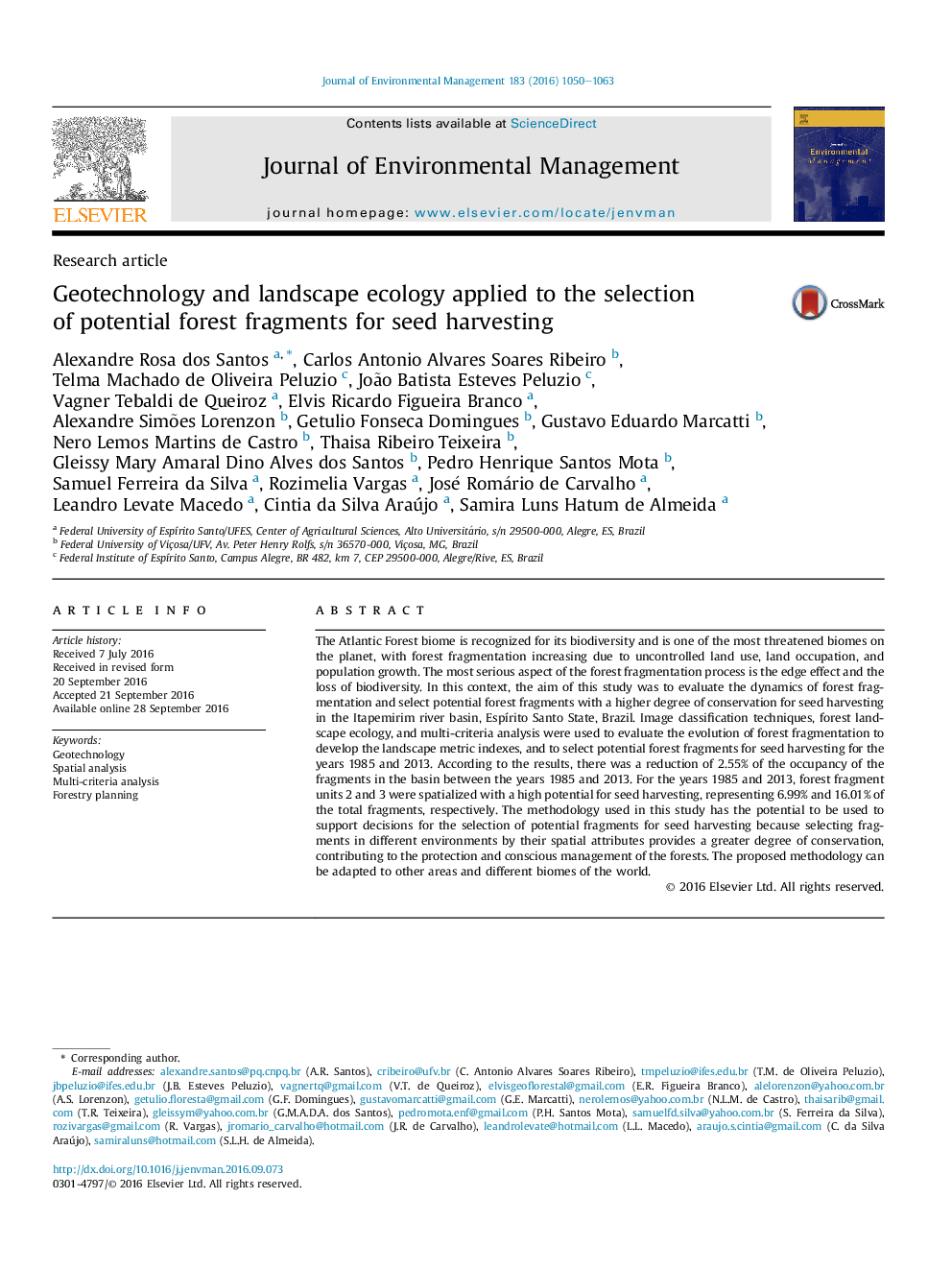| Article ID | Journal | Published Year | Pages | File Type |
|---|---|---|---|---|
| 5117243 | Journal of Environmental Management | 2016 | 14 Pages |
•We examined the dynamics of the forest fragmentation for the years 1985 and 2013.•We analyzed of the forest landscape ecology for the years 1985 and 2013.•We selected the potential forest fragments to seed harvesting.•The methodology serves as the basis for planning of the seed harvesting.•The proposed methodology can be adapted to areas of other countries.
The Atlantic Forest biome is recognized for its biodiversity and is one of the most threatened biomes on the planet, with forest fragmentation increasing due to uncontrolled land use, land occupation, and population growth. The most serious aspect of the forest fragmentation process is the edge effect and the loss of biodiversity. In this context, the aim of this study was to evaluate the dynamics of forest fragmentation and select potential forest fragments with a higher degree of conservation for seed harvesting in the Itapemirim river basin, Espírito Santo State, Brazil. Image classification techniques, forest landscape ecology, and multi-criteria analysis were used to evaluate the evolution of forest fragmentation to develop the landscape metric indexes, and to select potential forest fragments for seed harvesting for the years 1985 and 2013. According to the results, there was a reduction of 2.55% of the occupancy of the fragments in the basin between the years 1985 and 2013. For the years 1985 and 2013, forest fragment units 2 and 3 were spatialized with a high potential for seed harvesting, representing 6.99% and 16.01% of the total fragments, respectively. The methodology used in this study has the potential to be used to support decisions for the selection of potential fragments for seed harvesting because selecting fragments in different environments by their spatial attributes provides a greater degree of conservation, contributing to the protection and conscious management of the forests. The proposed methodology can be adapted to other areas and different biomes of the world.
Graphical abstractFigure optionsDownload full-size imageDownload high-quality image (528 K)Download as PowerPoint slide
